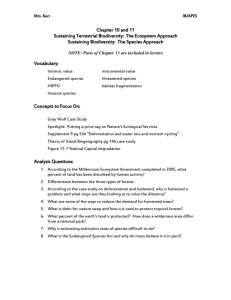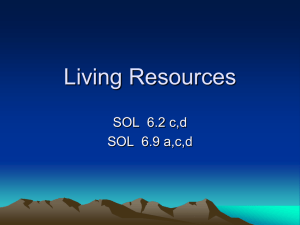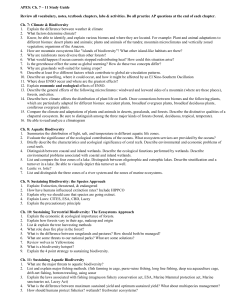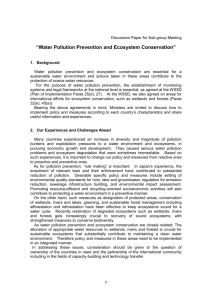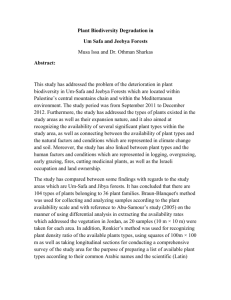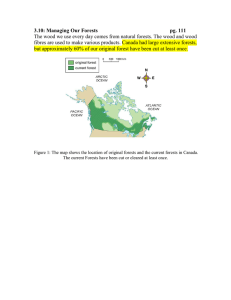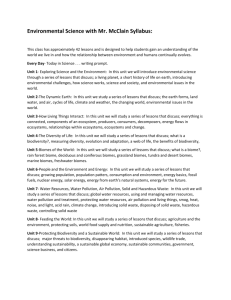Chapter 3 Environmental Science Test Review
advertisement
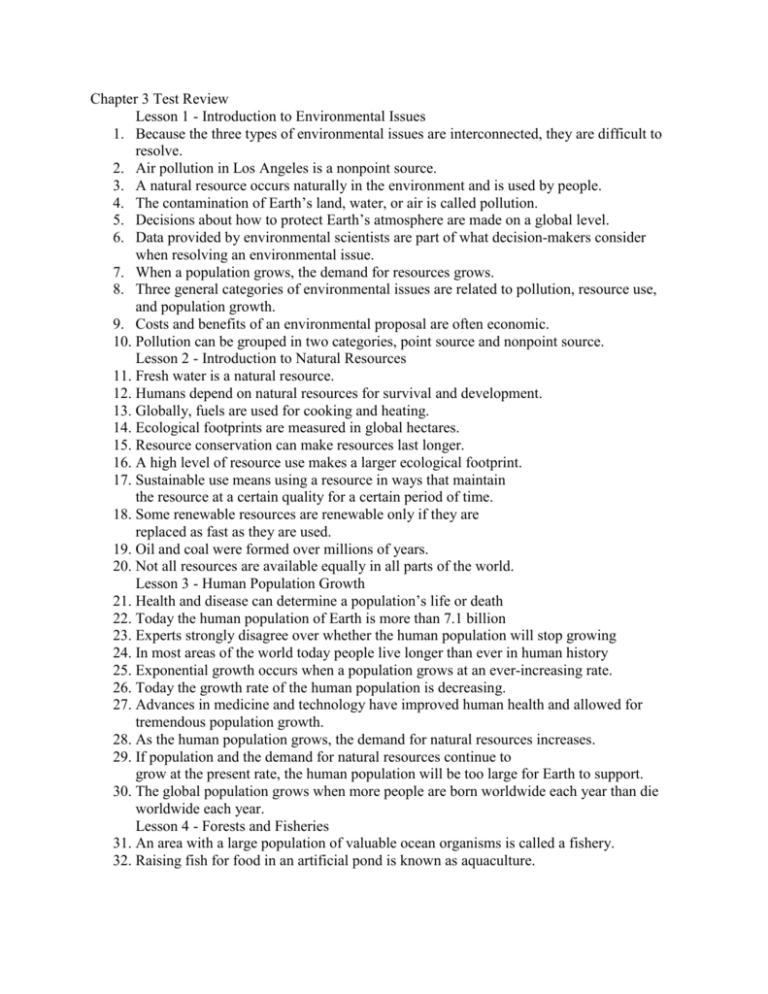
Chapter 3 Test Review Lesson 1 - Introduction to Environmental Issues 1. Because the three types of environmental issues are interconnected, they are difficult to resolve. 2. Air pollution in Los Angeles is a nonpoint source. 3. A natural resource occurs naturally in the environment and is used by people. 4. The contamination of Earth’s land, water, or air is called pollution. 5. Decisions about how to protect Earth’s atmosphere are made on a global level. 6. Data provided by environmental scientists are part of what decision-makers consider when resolving an environmental issue. 7. When a population grows, the demand for resources grows. 8. Three general categories of environmental issues are related to pollution, resource use, and population growth. 9. Costs and benefits of an environmental proposal are often economic. 10. Pollution can be grouped in two categories, point source and nonpoint source. Lesson 2 - Introduction to Natural Resources 11. Fresh water is a natural resource. 12. Humans depend on natural resources for survival and development. 13. Globally, fuels are used for cooking and heating. 14. Ecological footprints are measured in global hectares. 15. Resource conservation can make resources last longer. 16. A high level of resource use makes a larger ecological footprint. 17. Sustainable use means using a resource in ways that maintain the resource at a certain quality for a certain period of time. 18. Some renewable resources are renewable only if they are replaced as fast as they are used. 19. Oil and coal were formed over millions of years. 20. Not all resources are available equally in all parts of the world. Lesson 3 - Human Population Growth 21. Health and disease can determine a population’s life or death 22. Today the human population of Earth is more than 7.1 billion 23. Experts strongly disagree over whether the human population will stop growing 24. In most areas of the world today people live longer than ever in human history 25. Exponential growth occurs when a population grows at an ever-increasing rate. 26. Today the growth rate of the human population is decreasing. 27. Advances in medicine and technology have improved human health and allowed for tremendous population growth. 28. As the human population grows, the demand for natural resources increases. 29. If population and the demand for natural resources continue to grow at the present rate, the human population will be too large for Earth to support. 30. The global population grows when more people are born worldwide each year than die worldwide each year. Lesson 4 - Forests and Fisheries 31. An area with a large population of valuable ocean organisms is called a fishery. 32. Raising fish for food in an artificial pond is known as aquaculture. 33. Because new trees can be planted to replace trees that are cut down, forests can be renewable resources. 34. Selective cutting involves cutting down only some trees in a forest and leaving a mix of tree sizes and species behind. 35. A “well-managed” label on wood signifies that the forest that produced the wood is managed for sustainable yields. 36. Setting fishing limits is an approach to managing fisheries that can involve banning or restricting fishing of certain species. 37. Fishing methods that have been outlawed, to manage resources for a sustainable yield, include poisoning fish with cyanide. 38. Erosion is one disadvantage of clear-cutting. 39. Trees help other organisms by producing oxygen and absorbing carbon dioxide. 40. The proportion of the United States’ land area made up of forests is about one third Lesson 5 – Biodiversity 41. The major cause of extinction is habitat destruction. 42. Species that could become endangered in the near future are called threatened species. 43. The Endangered Species Act prohibits trade or products made from threatened or endangered species. 44. Protecting whole ecosystems is the most effective way to preserve biodiversity. 45. Biodiversity has both economic and ecological value within an ecosystem. 46. The sea otter is a keystone species that influences the survival of many other species in its ecosystem. 47. Climate, area, and diversity of niches affect biodiversity in an ecosystem. 48. Tropical rain forests are the most diverse ecosystems in the world. 49. Coral reefs are the second most diverse ecosystems in the world. 50. Scientists think people have directly caused the extinction of some species through habitat destruction, hunting, or other actions. Also, review the activities on the following pages for the test: 87, 89, 93, 96, 99, 101, 107, and 109-111 STUDY! STUDY! STUDY!
